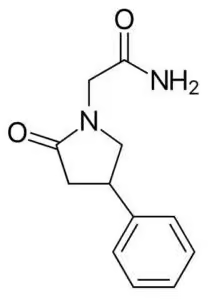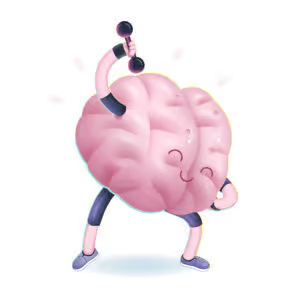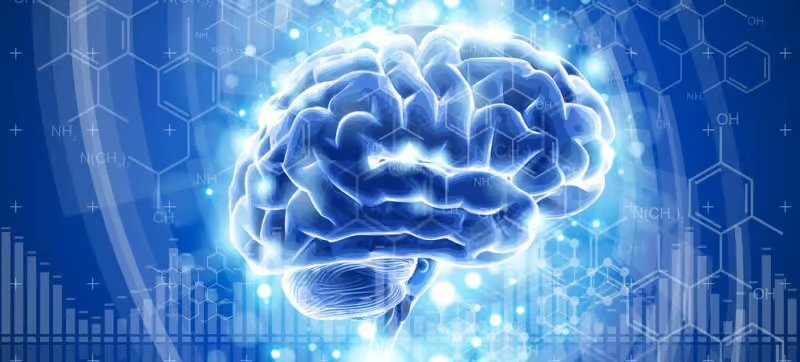Table of Contents
Key Takeaways
- Phenylpiracetam is a powerful water-soluble nootropic that enhances cognition, memory, focus, learning, and physical stamina, with a stimulant effect.
- It is 20 to 60 times more potent than Piracetam due to the addition of a phenyl group, which increases its bioavailability and ability to cross the blood-brain barrier.
- Phenylpiracetam is banned in professional sports due to its performance-enhancing properties, including improved athletic performance and resistance to cold.
- It has clinical applications as a treatment for epilepsy and is used as a prescription drug in Russia and Eastern European countries.
- Phenylpiracetam dosage recommendation is 100 mg 2-times per day.
Phenylpiracetam ((R,S)-2-(2-oxo-4-phenylpyrrolidin-1-yl) acetamide, Phenotropil, Fenotropil, Carphedon, Fonturacetam) is a water-soluble nootropic in the racetam-class of compounds.
Phenylpiracetam was created by adding a phenyl group to Piracetam by Russian scientists in 1983. It was developed as a nootropic to boost cognition, and to improve physical stamina.
It turns out that Phenylpiracetam is very effective in boosting athletic performance. It provides significant stimulatory effects and helps you resist cold. Leading to a ban by the World Anti-Doping Agency from use by athletes in the Olympics and other professional sports.[i]
Russian cyclist Anton Reshetnikov was suspended in 2007 for 2 years from the International Cycling Union for using Carphedon.[ii] One year earlier (2006), Russian Olympic athlete Olga Pyleleva lost her silver metal for using Carphedon.[iii]
Carphedon is a brand name for Phenylpiracetam. Adding a phenyl group to Piracetam boosts the bioavailability of Phenylpiracetam. It easily crosses the blood-brain barrier and is considered 20 to 60-times more potent than Piracetam.[iv]
Neurohackers report that Phenylpiracetam enhances alertness, focus, memory, and learning. It reduces brain fog. And it improves physical stamina and cold tolerance while combating physical and mental fatigue.
Phenylpiracetam helps:
- Prevent Anxiety & Fear: Phenylpiracetam helps reduce symptoms of anxiety and fear. Unlike popular prescription anti-anxiety and anti-depressant drugs, Phenylpiracetam has no sedative action or other adverse side effects associated with these medications.[v]
- Neuroreceptors: Phenylpiracetam increases the density of acetylcholine (ACh), NMDA, GABA and dopamine receptors in the brain.[vi][vii]More receptors mean more binding sites for neurotransmitters that affect memory formation, cognition, sleep and mood.
- Cerebral Circulation: Phenylpiracetam increases blood flow in the brain. As a derivative of Piracetam, this nootropic has the same mechanism of action when it comes to blood flow. It suppresses the constriction of blood vessels allowing the freer flow of blood. More oxygen and nutrients get to brain cells boosting alertness, cognition, focus and mood.[viii]
Overview
Phenylpiracetam (((R,S)-2-(2-oxo-4-phenylpyrrolidin-1-yl) acetamide) was created by adding a phenyl group to the original nootropic Piracetam.

Russian chemists synthesized Phenylpiracetam in 1983 to boost the physical and mental performance of astronauts during space flight. It’s currently used by Russian cosmonauts on the International Space Station.[ix]
Phenylpiracetam combats physical and mental fatigue. It enhances memory, mood and focus. It facilitates learning and retention, reduces brain fog, increases alertness and boosts physical stamina and tolerance to cold.
Phenylpiracetam is also an effective treatment for epilepsy. This debilitating condition is caused by sudden surges of electrical activity in the brain. This temporary disturbance in messaging systems between brain cells can cause a seizure. Normal brain function gets halted or mixed up. This is where Phenylpiracetam comes in.
Phenylpiracetam has been shown in animal studies to affect Alpha and Beta brain waves.[x] Scientists haven’t quite figured out why it works, but Phenylpiracetam has an ‘anti-convulsive’ action in the brain. They did conclude after one clinical trial, “Phenotropil reduced the frequency of seizures and improved cognitive function in the absence of epileptiform EEG abnormalities.”[xi]
Phenylpiracetam is sold as a prescription drug in Russia and several Eastern European countries. In the United States, Phenylpiracetam is sold as an unregulated OTC research compound.
How does Phenylpiracetam work in the Brain?
Phenylpiracetam boosts brain health and function in several ways. But two in particular stand out.
- Phenylpiracetam as a stimulant. Phenylpiracetam increases the density of neuroreceptors. Studies have shown it increases the density of acetylcholine (ACh), dopamine, GABA, and NMDA receptors. This translates into more receptors for each of these important neurotransmitters to bind with and boost their effectiveness.
The increase in density of neuroreceptors likely accounts for Phenylpiracetam’s stimulant-like properties. Similar to Ritalin or Adderall, this nootropic increases the effectiveness of dopamine in your brain. Increasing alertness, decision-making capability, and cognition.
But unlike stimulants like Ritalin and Adderall, Phenylpiracetam does not come with any stimulant-like side effects. You should not experience any fatigue, rapid heartbeat, decreased appetite or irritability. Rather you’ll feel increased stamina, have more physical endurance and get smarter.
Just don’t try using Phenylpiracetam if you’re planning on being an Olympic athlete. It was banned several years ago because it’s too effective to be used in professional sports. We don’t want an unfair advantage now, do we?
- Phenylpiracetam decreases anxiety and depression. For similar reasons to how Phenylpiracetam works as a stimulant, it can also tame symptoms of anxiety and depression. Animal studies show that it increases the density of receptors for acetylcholine (ACh), GABA and NMDA receptors.[xii]
This increase in receptor sites for GABA, choline and glutamate affects levels of the calming neurotransmitters GABA and serotonin in your brain. Studies in Russia using Wistar rats shows that Phenylpiracetam floods your brain with the neurochemicals you need to chill out.[xiii]
How things go bad
As we get older, our brain chemistry and metabolism changes. And it seems these changes are affecting younger and younger people.
↓ Recall, reaction time and learning capacity declines
↓ Neurotransmitter levels decline
↓ Density of ACh, GABA and NMDA, and dopamine receptors decline
↓ Acetylcholine levels decline
↓ Cerebral blood flow declines
↓ Stamina and endurance decline
All of these changes are contributing factors to age-related cognitive decline. Early signs of these effects can be seen in poor decision-making, difficulty learning, and even recalling simple things like an important appointment.
But even if you’re not concerned with the signs of aging, Phenylpiracetam can help.
Phenylpiracetam benefits
Phenylpiracetam is highly bioavailable when used as a nootropic. Once digested it quickly gets absorbed and crosses the blood-brain barrier.
Phenylpiracetam modulates neuroreceptors. It’s been shown to increase the density of receptors for GABA, NMDA, dopamine and acetylcholine.
More neuroreceptors result in more of each neurotransmitter being able to bind to neurons. And affect alertness, cognition, memory, recall and mood.
Phenylpiracetam has a positive effect on physical performance by increasing endurance, and reducing physical and mental fatigue. In fact, these effects are so potent that Phenylpiracetam has been banned from professional sports by the World Anti-Doping Agency.
Phenylpiracetam has been shown to act as a stimulant. But unlike pharmaceutical drugs, it does not affect your cardiovascular or respiratory system. And does not have the side effects of jitteriness, restlessness or irritability like regular stimulants.
Phenylpiracetam is also noted for increasing your threshold to tolerance for cold.
How does Phenylpiracetam feel?
 Many neurohackers say Phenylpiracetam is the strongest nootropic they’ve ever experienced. It’s highly bioavailable and you experience the effects within 30 minutes of taking it.
Many neurohackers say Phenylpiracetam is the strongest nootropic they’ve ever experienced. It’s highly bioavailable and you experience the effects within 30 minutes of taking it.
Phenylpiracetam users say it increases concentration, motivation, memory, physical endurance, and tolerance to cold. Learning is quicker and stress is reduced.
People report that learning and processing information becomes easier with Phenylpiracetam. You’re not re-reading sentences and paragraphs trying to understand them.
Short and long-term memory improves. Motor skills improve so you’re typing faster and more accurately.
Those dealing with depression report a decrease in depressive symptoms. More confidence helps in social situations and conversations are easier.
Productivity rises and you assume a “get it done’ mentality. Procrastination is a thing of the past.
Phenylpiracetam is a popular pre-workout supplement. It increases your endurance and reduces both physical and mental fatigue. And if you’re one of the unfortunate ones who live in a cold climate you’ll find that your tolerance for cold is better.
Phenylpiracetam Clinical Pharmacology & Research
Phenylpiracetam was developed in Russia in 1983. And the majority of research done with this nootropic has been conducted in Russia. Published in Russian medical journals in Russian.
So we have limited clinical trial data to draw on. And like many nootropics we rely on nootropic user reviews. The following is two samples of clinical trials I was able to find that have been translated into English. And published in Western medical databases.
Phenylpiracetam Improves Cognition
A study done by Russian researchers investigated the effects of Phenylpiracetam on cognition. 99 adults aged 40 – 60 suffering from cognition deficits due to surgery or brain trauma were enrolled in this study.
Volunteers were given 200 mg of Phenylpiracetam daily for 30 days. The researchers found that those using the nootropic showed a significant improvement in motor coordination, higher brain function, memory, attention and counting. And a reduction in both anxiety and depression.[xiv]
Phenylpiracetam Boosts Cerebral Circulation
Researchers in Moscow recruited 400 patients suffering from ischemic stroke. This is the most common type of stroke where blood vessels carrying blood to the brain are blocked by a blood clot.
Half of the group received 400 mg of Phenylpiracetam daily for a year. The control group got a placebo.
The research team found that the group who received Phenylpiracetam experienced a significant restoration in cognitive functions, and resumed daily activities. Far better than the control group who took a placebo.[xv]
Phenylpiracetam Recommended Dosage
Recommended Phenylpiracetam dosage is 100 mg twice per day with a choline supplement. One Phenylpiracetam dose in the morning, and one in the early afternoon.
Don’t use Phenylpiracetam later in the day because its stimulant effect can cause insomnia.
You can develop a tolerance to Phenylpiracetam, so consider taking it only on days when you need the extra focus. Or try cycling it one week on and one week off.
Phenylpiracetam Side Effects
Phenylpiracetam is non-toxic. So is considered well-tolerated and safe.
As with many of the racetams, Phenylpiracetam can cause headaches because it boosts the use of acetylcholine in your brain. Choline supplements like Alpha GPC or CDP-Choline can help you avoid this side effect.
According to an animal study, Phenylpiracetam was reported to reduce body weight gain by a significant amount in obese rats. However, since rat brain neurotransmitter receptors differ from humans, it is impossible to say for sure if Phenylpiracetam has similar metabolic benefits in humans at this time.
Tolerance is a problem with Phenylpiracetam and builds rather quickly. Commonly reported dosages sit at around 12x that of Noopept. It will soon lose its effects if used in excess. So try using Phenylpiracetam only when you need extra cognitive performance, or before a workout. Or try cycling it one week on and one week off to avoid tolerance.
Many neurohackers find that stacking Phenylpiracetam with a choline supplement boosts the effect even more with improved memory and cognition. And this is supported in several research studies.
Where to buy Phenylpiracetam
Phenylpiracetam is sold in tablet, capsule and powder form. Tablets and capsules are usually 100 mg each.
You can currently buy Phenylpiracetam from Click for Cosmic Nootropic – Phenylpiracetam . The company sells brand name and patented forms of many of the racetams and is highly recommended.
Nootropics Expert Recommendation
Phenylpiracetam 100 mg 2-times per day
 I recommend using Phenylpiracetam as a nootropic supplement.
I recommend using Phenylpiracetam as a nootropic supplement.
Your body does not make Phenylpiracetam on its own. So to get its benefits you must take it as a supplement.
Phenylpiracetam is especially helpful for those suffering from ADHD or brain fog. This nootropic has a stimulant-like effect similar to that of pharmaceutical stimulants. But without the side effects of increased heart rate, irritability and restlessness.
Phenylpiracetam can boost athletic performance. It has been shown to improve physical performance, increase stamina and endurance. And even provides cold-weather resistance.
Phenylpiracetam is also particularly useful to students and executives who want to boost mental function including alertness, cognition, clarity, focus, learning and memory. This nootropic also has anti-depressant and anti-anxiety benefits.
Studies have shown that Phenylpiracetam can be effective in relieving the frequency of epileptic seizures in those dealing with epilepsy. It even compliments some epilepsy medications.
You should use Phenylpiracetam with a good choline supplement like Alpha GPC or CDP-Choline. It helps boost the effectiveness of neural acetylcholine, so demands the presence of more choline in your brain.
You can safely boost daily intake of Phenylpiracetam to 400 mg. But be aware that tolerance to the effects of this nootropic build quickly. So we recommend using Phenylpiracetam only on days when you need the extra cognitive ability. Or cycle the use of this nootropic one week on, and one week off.
You can currently buy Phenylpiracetam from Click for Cosmic Nootropic – Phenylpiracetam . The company sells brand name and patented forms of many of the racetams and is highly recommended.









Join The Discussion - 131 comments
Malik
January 15, 2020
Can I stack this with the ADD stack you recommended in your other post
David Tomen
January 16, 2020
Malik, it depends. There is no contraindication with my ADD stack overall. But some people may respond differently to this nootropic and won’t be able to use it. I’m one of those people. It may be different for you.
Try it at the lower recommended dose and see if it works for you.
kareeda-ni
January 5, 2020
Mr. Tomen, I am very grateful for this resource. I truly understand and appreciate your discouraging concomitant use of some nootropics with prescription anxiolytics in that there could be sometimes severe effects. Phenylpiracetam caught my eye, as a patient suffering from gaba-a downregulation from years of prescribed short-acting benzodiazepines. Many thousands of tolerance withdrawal sufferers are looking for safe effective non-RX solutions for regaining receptor volume either while attempting to taper or to hold at a therapeutic dose. My strategy this far is to stack with nmda antagonists and glutamate regulators as withdrawals tend to express excitotoxically. Again, I’m so happy to have stumbled across your videos. Any advice on this subject would help a lot of us.
David Tomen
January 5, 2020
Kareeda-ni, sounds like you are already on the right track. Only thing I’d suggest is supporting nerve growth factor and brain-derived neurotrophic factor which will help repair and grow new dendrites, axons and synapses. Here are 13 options for boosting BDNF: https://nootropicsexpert.com/13-nootropics-to-boost-bdnf/
Kareeda-ni
January 6, 2020
Many thanks.
I will definitely go over the BDNF enhancers. As I am not tapering but, instead, trying to hold dosage, I worry that any new nerve growth would yield yet more exposure-encoded downregulated gaba receptors.
One more bit of confirmation, if I may…
Specifically, I have stacked B-6, Taurine, Lemon Balm, Circumin w/pepperine & Mag L-theonate with intentions to start Lithium Orotate and Ashwaghanda once I am sure all is agreeing.
The rationale is, not to overdo anything to increase gaba which is likely not depleted but has fewer binding sites due to long-term benzo use. This sets up an environment of glutamate hyper-potentiation which is a source of extreme discomfort and a low seizure threshold.
The only exception here is with Lemon Balm which might extend the effects of gaba, marginally, dose to dose. The rest, by way of your website and other research, seem to act as a brake on excitatory neurotransmitters primarily.
Due diligence clearing these with my doctor but his understanding, not only of the pharmicokinetcs of, each nootropic but, also, of lorazepam, is far from complete.
I’d be grateful to know if there are any of my stacked items that might require added precautions, in light of my situation.
Things seem to be going well so far.
David Tomen
January 7, 2020
Kareeda-ni, I understand your need for caution. But I think the only thing you can do is be aware of which nootropics affect GABA, its receptors and transporters. And learn what the side effects or warning signs are for fewer receptors and listen to what your body is telling you.
Most doctors know nothing about nootropic supplements. It’s not taught in medical school and they don’t have the time or interest in researching this on their own. So it’s up to us as neurohackers to figure this out.
kareeda-ni
January 7, 2020
Much obliged. I am enjoying the research and heartened that it might be possible to nudge my bruised neurochemistry towards balance with help from these remarkable new tools. It does my mind good just to be trying things out and refusing to feel stuck. I see things in your articles that could be of use to friends with other conditions and have sent them your links. Great insights.
Matt
August 3, 2019
Hello David, I got a horrilbe headache on phenylpiracetam and it also totally wiped me out for the next day, I also took CDP with it but still had the headache. If I got a headache on this will I most likely get a headache on other racetams or is it possible i could try other racetams and not get a headache (because i’d like to try some of the others to see if i can use them without getting a headache)?
David Tomen
August 4, 2019
Matt, first thing I’d try is switching to ALpha GPC and see if that works better for you. It does for me. And you may also want to try increasing your choline supplement dose by 3 – 600 mg.
Maicon
July 28, 2019
use for learning, cognition, focus and memory, five days per week, is good?
David Tomen
July 28, 2019
Maicon, sounds good but make sure you use it with Alpha GPC or CDP-Choline.
Maicon
July 28, 2019
do i need to cycle? long term use
David Tomen
July 29, 2019
Maicon, some people find they need to cycle and some do not. It depends on how your brain works. Trial and error is the only way to find out.
yusuke
June 6, 2019
Hello David.
Thanks for great articles always.
I have one question for you.
US gov banned Piracetam long before as i know.
Nowadays Japanese gov also banned this kind of nootropics meds a lot.
so are you in US or in out of US?
How can you use like these meds legally?
Thanks
David Tomen
June 9, 2019
Yusuke, the USA hasn’t ‘banned’ Piracetam as far as I know. It just cannot be sold as a “dietary supplement”. It can only be sold for “research” purposes.
stephen
February 1, 2019
Phenylpiracetam is supposed to take effect (basically) immediately correct? There’s not really an acclimation period where it may take your body 1-2 weeks or so to get used to it before you start seeing any positive effects right? I have been taking it for almost 10 days and honestly havent really seen any effects, even at 400 mg a day. Also, I know you’re supposed to cycle it but if I never even experienced any positive effects at all in the first place, then it feels like i should just keep taking it everyday for now, right? should i consider taking 500-600mg a day? Thank you David.
David Tomen
February 1, 2019
Stephen, are you taking a choline supplement and B-Vitamins with your Phenylpiracetam? If not then you’ll not likely experience the benefits of this racetam.
stephen
February 2, 2019
David,
I am not taking any choline supplement but I made sure i was having egg yolks pretty much every day while on phenyl, i am having 2 per day which equates to just under 250mg so i think that was adequate/close to adequate amount. Plus, i thought choline was only to relieve headaches that phenyl could cause? Also, i have a very healthy, well-balanced diet that includes most of the major food sources for all of the B vitamins so that is most likely not the issue here as well.
David Tomen
February 2, 2019
Stephen, unless you have a lab and can test your eggs to know exactly how much choline there are providing and test your food to know exactly how much of the B-Vitamins you are getting with food – I highly recommended using both a choline supplement and a B-Complex supplement when using Phenylpiracetam.
You mentioned that it’s not doing anything for you. The only way to know if this nootropic is not for you is to follow the dosage recommendations closely. Then if it still does nothing for you then you’ll know for sure it’s not for you.
stephen
February 3, 2019
Ok David, thanks for the advice
John
September 16, 2024
Yes it takes effect inside of 20-40 minutes. Half life of about 5 hours. Zero metabolites or metabolism it goes in and comes out fully in tact. As I understand it you excrete 100% of what you take in your urine! 80% of it is out inside of 8 hours I think it is.
So it does not accumlate in the body at all. Half lives stack up so taken daily you would need to stop taking it probably 2-3 days out to pass a urine test for any governing body like WADA that tests for it.
The shortest medical research study is 30 days and it was 100mg twice daily. The 400mg daily was for a year and was in very very unhealthy patients I think they had things like ischemic strokes, side effects from electroconvulsive shock therapy and other extreme brain trama.
Usually when you see studies in Russian where they are giving 3.5 to 12.5 grams via IV it is leading up to heart bypass surgery and people in coma’s!
I have only been using the stuff for 4 days now at 100mg twice daily but nice mental clarity, focus, and less racing thoughts! Start out at minimum standard recomended research dose and go for time not high dose for short time. There is ZERO research showing any benifit to the brain with anything less than 30 days. The research clearly shows that the longer you take it the longer lasting the nootropic effect is when you stop taking it. It is designed to help the brain function better short term but especially long term.
If you had scurvy and wanted to heal from scurvy you would not take a single vitamin c tablet or eat one lemon and call it good!
Angie
July 2, 2018
Is this safe to use with Adrafinil and would you recommend using this with Adrafinil for severe social anxiety?
David Tomen
July 2, 2018
Angie, there is no evidence that Phenylpiracetam is safe to use with Adrafinil. Phenylpiracetam’s mechanism of action is primarily increasing the density of all major neurotransmitter receptors. And Adrafinil appears to be a dopamine reuptake inhibitor which means it’ll boost the amount of dopamine available in parts of your brain.
It’s impossible to speculate how the two will work together. I personally tried Phenylpiracetam with Ritalin and did not like the effect.
Aniracetam is the best of that class of nootropics for anxiety and depression.
Instead, you may want to try some of the adaptogens like Bacopa Monnieri, Gotu Kola, or Lemon Balm. See this post on treating anxiety here: https://nootropicsexpert.com/best-nootropics-for-social-anxiety/
dariusz
November 19, 2017
hi
do you know where i can find this Russian studies about Phenylpiracetam???
David Tomen
November 19, 2017
Dariusz, the only clinical studies I could find were in English medical journals which were translated from the original Russian. Since I don’t speak Russian, I never looked for more of the original studies. The Russian medical community publishes their own medical journals. So if you speak and can read Russian, do a search and see what turns up. Wish I could help you more. But I wouldn’t recognize a Russian journal if I tripped over it because it’s an alphabet completely different to English.